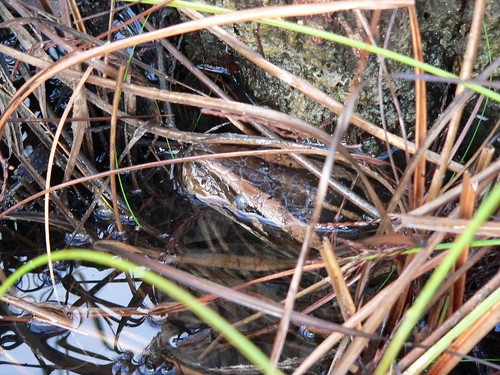
How do you find something that doesn’t want to be found - something that has evolved to be cryptic, elusive, and stealthy? That is the question asked of APHIS geneticist Dr. Antoinette Piaggio. She and others at the National Wildlife Research Center (NWRC) - the research arm of the APHIS Wildlife Services program - are investigating new ways to track and locate invasive Burmese pythons.
Burmese pythons have made a home in Florida competing with and feeding on native wildlife. Experts agree that new tools and techniques are crucial to monitoring and controlling the spread of this elusive snake.
“Burmese pythons are semi-aquatic and can be very hard to detect given their elusive nature and cryptic coloration,” states Piaggio. “We’ve developed a new detection method that uses environmental DNA, thereby eliminating the need for seeing or handling snakes.”
The use of environmental DNA (eDNA) is a fairly new technique. Because animals shed DNA into the environment from their skin, saliva or other cells, the presence of these genetic fragments can often be detected. Based on this, NWRC researchers developed a polymerase chain reaction (PCR) method to detect python eDNA at low concentrations in water. Tests showed python eDNA was detectable for up to 96 hours in water. This method presents a promising new tool for monitoring the presence-absence and current distribution of invasive Burmese pythons in Florida.
eDNA is not the only way NWRC researchers are helping State and local officials find and remove Burmese pythons. Last year, USDA was issued a patent for a live snake trap that utilizes two trip pans for the capture of larger, heavier snakes, such as the python. The pans are spaced such that non-target animals are unlikely to trigger the trap. Researchers are working with captive pythons at NWRC’s field station in Gainesville, Florida, to evaluate how best to use the trap.
APHIS Wildlife Services provides Federal leadership and expertise to resolve wildlife conflicts to allow people and wildlife to coexist. Working to develop new tools and techniques for reducing damage from invasive wildlife is just one of several key mission areas of the program. Wildlife Services researchers, biologists, and field specialists also address issues related to wildlife disease, aviation safety, livestock predation, endangered and threatened wildlife, and agricultural protection. To learn more, please visit the Wildlife Services website.
April is Invasive Plant, Pest, and Disease Awareness Month.
